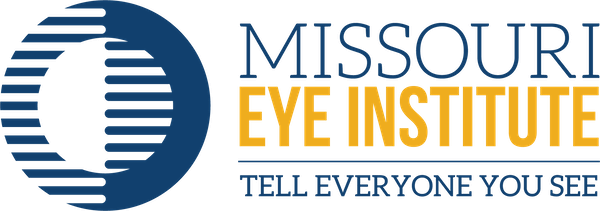
Posted by: Missouri Eye Institute in Blog on August 9, 2021

Between textbooks, chalkboards, laptops and tablets, the educational setting demands a lot from our eyes. In fact, it’s estimated that our visual system is responsible for taking in about 80 percent of the data we process in the learning environment. So, if that system isn’t in good working order, the consequences can be huge.
Younger students in particular tend to think everyone experiences the world the same way; they may assume any vision issues they have are normal, if they perceive a physical problem at all.
Instead, students may develop their own workarounds in the classroom, get frustrated with their struggles and display behaviors the adults in their lives don’t recognize as stemming from poor eyesight. Teachers and parents may even mistake some of these symptoms as learning disabilities.
As adults, we often miss our own subtle vision changes that happen slowly over time. We tend to attribute seemingly minor difficulties to allergies, poor sleep or dry eyes.
For students of all ages—and the educators who share the classroom with them every day—it’s important to recognize physical and behavioral changes that could signal a vision problem that could be easily addressed. Here are 10 obvious and not-so-obvious signs to look for (in our students and even in ourselves):
A yearly eye examination can detect vision problems that could disrupt a student’s academic progress or a teacher’s ability to conduct lessons. American Optometric Association (AOA) guidelines call for an initial eye examination at 6 months of age, at 5 years old (or before kindergarten) and annually for life.
This advice is especially important for those who already have a prescription for vision correction. Your eye doctor will check for issues such as nearsightedness, farsightedness or astigmatism, as well as colorblindness, poor depth perception and eye misalignment. Your doctor may also want to screen for diseases like cataracts, glaucoma and macular degeneration.
If you’re an adult with vision issues, including the symptoms above, you may wish to see if you might be a candidate for permanent vision correction, such as LASIK. Teachers, professors, and students entering college (or completing college and entering the workforce) stand to gain so much from the educational – and lifestyle – benefits of Modern LASIK.
Missouri Eye Institute has helped thousands of patients attain freedom from glasses and contact lenses. Contact us at (800) 383-3831 to schedule a thorough eye exam or visit MissouriEye.com to learn more about our services.
Tags: Eye Exams
Springfield
1531 E Bradford Parkway Ste 100
Springfield, MO 65804
Branson
1000 James F. Epps Rd Ste 2
Branson, MO 65616
Joplin
4500 E 32nd St
Joplin, MO 64804